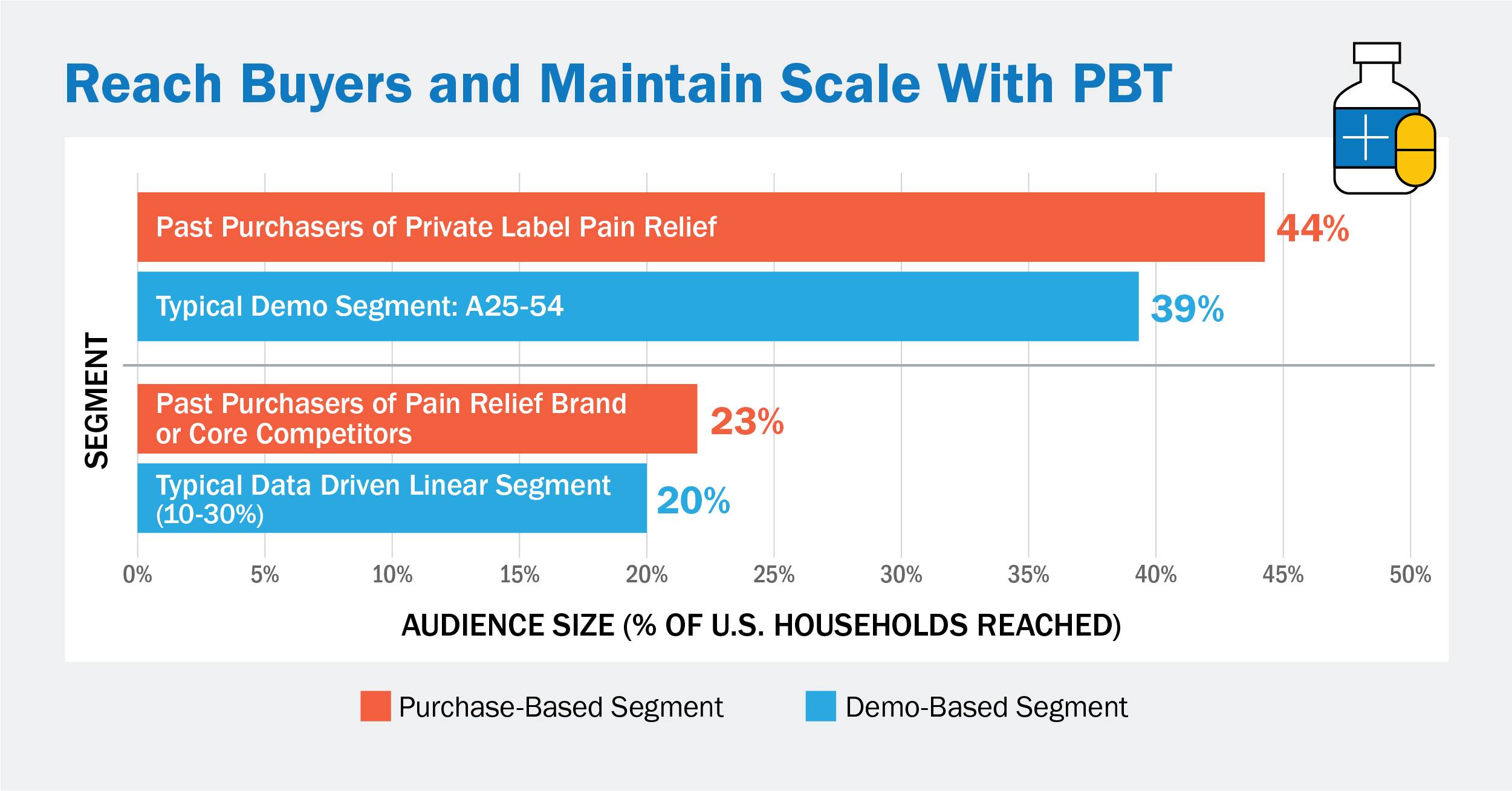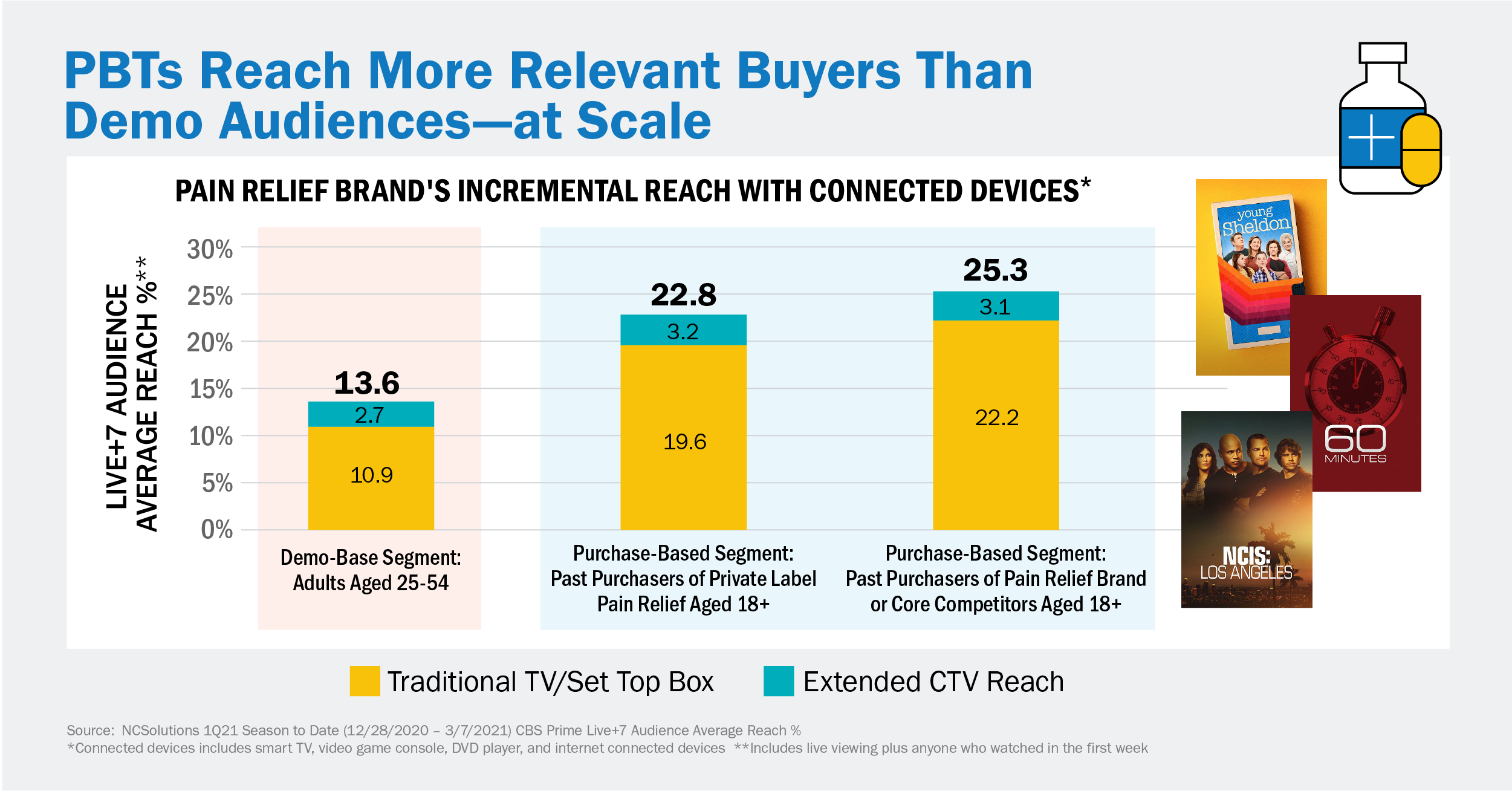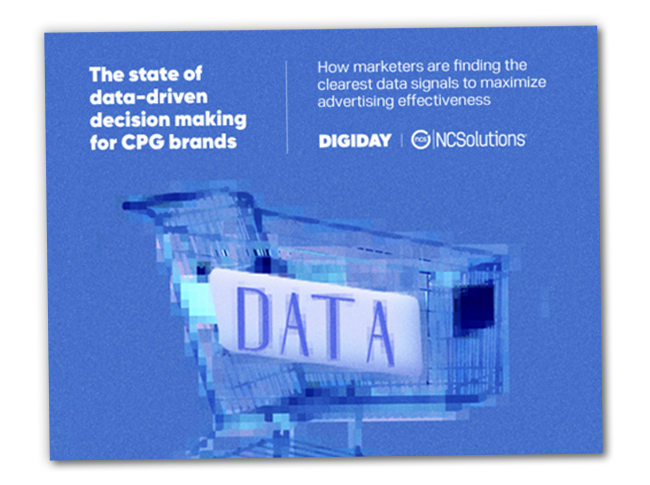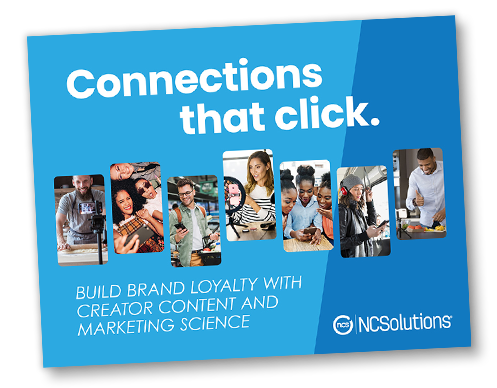
By Peter Topol, VP of Advanced TV Partnerships
Across the TV industry, in all its different formats, purchase-based targeting (PBT) is known for getting advertising in front of a precise audience that will be more likely to buy more. It’s a great complement to a traditional demo-based campaign to drive incremental reach.
But did you know that it’s possible to deliver higher—and more relevant—reach using a purchase-based target than using a demo target?
Here’s how it plays out for a leading pain relief brand advertising on CBS primetime. If the brand wants to reach a similar scale of audience as it would in a typical, broad reach demographic segment, it can use purchase-based targets to serve ads to buyers of private label pain relief products. This purchase-based segment reaches 44% of U.S. households—comparable to the 39% reach of a demographic audience (adults aged 25-54) for a typical linear TV guarantee.
Or, if the brand aims to reach a more precise audience around the size of a data-driven linear segment, it can target buyers of its brand as well as core competitor pain relief brands to reach 23% of U.S. households.
Both of these scenarios allow the pain relief brand to reach those who are more likely to buy its brand, without sacrificing scale.

Why Use a Purchase-Based Segment Instead of a Demo-Based Segment?
Not only is past purchase behavior the number one predictor of purchase intent—but it also allows advertisers to measure the incremental reach that Connected TV (CTV) brings to the table. It’s not possible to measure incremental reach if linear TV and CTV aren’t being bought (or at least planned) on the same currency. But using purchase-based segments across all of TV allows you to use one currency to prove the value of your TV campaigns.
The reach of traditional TV and the incremental reach of CTV are comparable using PBT—and even measurably higher—than with a demo buy for this pain relief brand. It could scale purchase-based targeting to reach a similar number of viewers (and ones that are more likely to buy its brand) across a range of CBS programming, from news to sitcoms to dramas. Looking across three different CBS programs (Young Sheldon, 60 Minutes, and NCIS: Los Angeles) we see average results: the brand reaches 23% of U.S. households with traditional and connected TV by targeting private label pain relief buyers, or 25% of U.S. households by targeting buyers of its brand or its core competitors—more than the 14% reach possible with a traditional demo buy while narrowing in on more likely buyers.

While the effective CPM of the purchase-based segment may be higher than a guaranteed demo, purchase-based targeting provides you the ability to achieve incremental reach for your brand to reach your right buyers across all of TV.
Check out more examples from four CPG brands in the diaper, dish detergent, shelf-stable soup, and paper towel categories to see how you can measure the incremental reach of your TV buy with your NCS audience.






.png)
.png)




